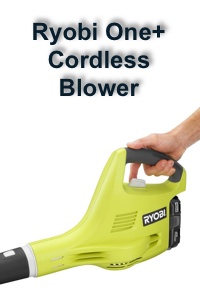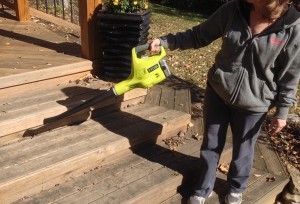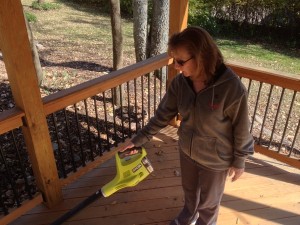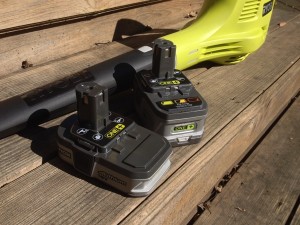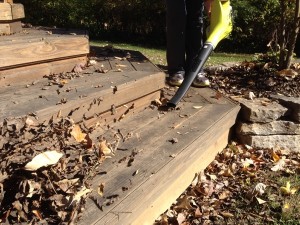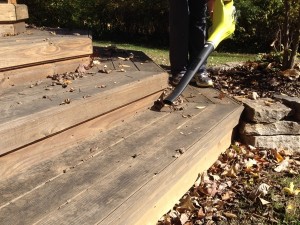Ryobi One+ Cordless Blower
Does the Ryobi One+ Cordless Blower / Sweeper (P2102) Bridge the Gap?
If you’ve followed Tool Skool for any amount of time at all, you are familiar with the fact that I like a lot of the tools in the Ryobi One+ 18V line (click here or any of the related links at the end of this article to read about other One+ tools). Most tool companies now are going towards putting numerous tools on one battery platform, but Ryobi was one of the first to do this with the One+ line, and may be the only company to make the tools backwards and forward compatible, meaning you can use both NiCad and Lithium Ion One+ batteries with any of the tools in the line. I’m always ready to give any of the tools in this line a test run.
Since it’s fall, and the leaves are coming down and covering my driveway and deck, I broke out the Ryobi One+ Cordless Blower. In many places you’ll see it referred to as a “sweeper”, which might be a more accurate description, although I don’t think that’s a bad thing. So let’s start with taking the tool out of the box. There was very little assembly required. Just attach the blower tube and you are ready to put the battery on and go. You can either buy the blower with a battery or without. If you already have a bunch of the One+ batteries, you can save some money and buy the bare tool.
What to expect:
While you CAN use this tool with any of the One+ batteries, I really would stick to the Lithium-Ion with this tool. I tested the blower with the P103 Compact Battery and the P105 high capacity battery: both Lithium-Ion. There are pros and cons to both. Since this is a blower, it draws a lot of power, so you don’t get a lot of runtime with the compact battery (about 7 minutes from my tests). However, the compact battery makes the tool weigh next to nothing, so you decide if you want a little longer runtime or you don’t mind carrying a little extra weight.
Applications where this tool excels:
This tool really is pretty simple. Once you’ve picked your battery and snapped it in place, really it’s just a flip of the switch and you are off and running. The claim from Ryobi is that it blows at up to 120mph. I have no idea whether or not that’s true, but I will say that one of their other “product statements from the box” that is true is that this tool is really designed for hard surfaces. I also think you are better off using this blower on dry materials. I’ve had great luck quickly blowing the dry leaves off of the deck of my gazebo. Last week, at the gas station, my favorite attendant had this blower out cleaning up around the pumps. When I asked him, he said it was perfect for that kind of job.
What NOT to expect:
I’m often amazed at user reviews I read where it seems that they person is expecting the tool to do all things… you know, blow off the patio with wet leaves that have been piling up for weeks, while being cordless, lightweight, very cheap in price, and maybe cooking you a grilled cheese sandwich as a bonus. This blower WILL NOT take the place of your gas blower. But hey, if you think about it, would you really expect it to? It’s a pain in the rear to pull out the gas blower, which is heavy and stinky, and hard to start to do a simple job like blowing dry leaves off of your steps or patio. This blower is designed to bridge the gap. It’s that simple. Cut it some slack.
Wrap-up:
For small jobs on hard surfaces, removing dry materials, this is a great tool. I suggest using it with the Lithium-Ion One+ batteries and you’ll be happier.
For more info and for pricing, click the links below:


